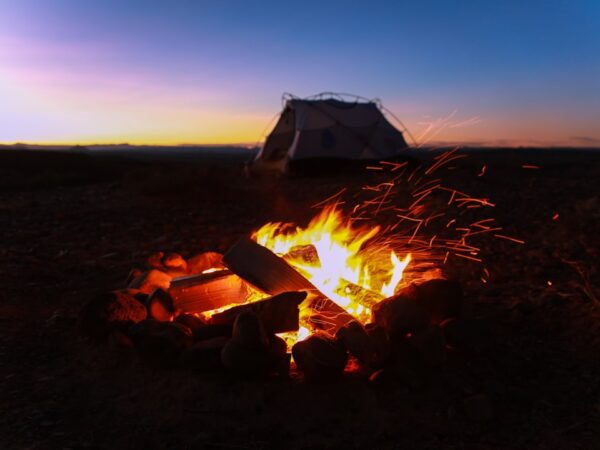
Scaling Yosemite’s Granite Spires: A Climber’s Dream.
Yosemite National Park is renowned for its breathtaking granite spires that attract climbers from all over the world. These towering formations, such as El Capitan and Half Dome, have become iconic symbols of the park and have played a significant role in the history of climbing. In this blog post, we will delve into the rich history of climbing in Yosemite, explore the challenges climbers face when scaling these granite spires, discuss the necessary gear and equipment, highlight some of the best routes, emphasize the importance of safety, and examine the impact of climbing on Yosemite’s natural resources. Whether you are an experienced climber or simply fascinated by the sport, this article will provide you with a comprehensive understanding of climbing in Yosemite National Park.
Key Takeaways
- Yosemite’s granite spires offer a unique and challenging climbing experience.
- Climbing has a rich history in Yosemite National Park, with legendary climbers like Royal Robbins and Lynn Hill making their mark.
- Scaling Yosemite’s granite spires requires physical and mental strength, as well as technical skills and knowledge of the terrain.
- Proper gear and equipment, including ropes, harnesses, and helmets, are essential for safe climbing in Yosemite.
- Some of the best routes for scaling Yosemite’s granite spires include El Capitan’s Nose and Half Dome’s Regular Northwest Face.
The History of Climbing in Yosemite National Park
The history of climbing in Yosemite dates back to the late 19th century when a group of adventurous individuals began exploring the granite cliffs and spires that dominate the landscape. These early climbers were drawn to Yosemite’s unique geological features and sought to conquer its formidable walls. One of the most notable climbers from this era was John Muir, who not only explored and documented Yosemite’s natural wonders but also ventured onto its cliffs.
As time went on, more climbers were inspired to test their skills on Yosemite’s granite spires. In the 1950s and 1960s, a new generation of climbers emerged, pushing the boundaries of what was thought possible. Notable climbers such as Royal Robbins, Warren Harding, and Yvon Chouinard made groundbreaking ascents on El Capitan and other prominent formations. Their achievements not only solidified Yosemite’s reputation as a premier climbing destination but also paved the way for future generations of climbers.
Over the years, climbing techniques and equipment have evolved significantly. Early climbers relied on rudimentary gear such as hemp ropes and pitons made from iron. Today, climbers have access to advanced equipment such as dynamic ropes, specialized climbing shoes, and lightweight harnesses. The introduction of modern gear and techniques has allowed climbers to tackle more challenging routes and push the limits of what is possible in Yosemite.
The Challenges of Scaling Yosemite’s Granite Spires
Scaling Yosemite’s granite spires presents climbers with a unique set of challenges. The physical demands of climbing are evident, requiring climbers to possess strength, endurance, and agility. Climbers must navigate steep inclines, negotiate narrow ledges, and perform intricate moves that require balance and precision. The physical challenges are further compounded by the mental aspect of climbing, which requires climbers to remain focused, make split-second decisions, and overcome fear and doubt.
Yosemite’s granite spires present additional challenges due to their unique features. The granite in Yosemite is known for its smooth texture, which can make it difficult to find adequate handholds and footholds. Climbers must rely on their technique and skill to navigate these seemingly featureless walls. Additionally, the cracks and fissures that run through the granite can provide opportunities for protection but can also be treacherous if not properly utilized.
The Gear and Equipment Needed for Climbing in Yosemite
| Equipment | Description |
|---|---|
| Climbing Rope | A dynamic rope that can stretch to absorb the force of a fall. |
| Climbing Harness | A padded waist belt and leg loops that attach to the rope for safety. |
| Climbing Shoes | Tight-fitting shoes with sticky rubber soles for grip on rock surfaces. |
| Climbing Helmet | A protective helmet to prevent head injuries from falling rocks or equipment. |
| Climbing Protection | Devices such as cams, nuts, and hexes that are placed in cracks to protect against falls. |
| Climbing Carabiners | Metal clips used to attach equipment to the rope or harness. |
| Climbing Belay Device | A device used to control the rope and protect the climber in case of a fall. |
| Climbing Chalk | A powder used to dry sweaty hands and improve grip on rock surfaces. |
Climbing in Yosemite requires a specific set of gear and equipment to ensure safety and success on the walls. The essential gear includes a climbing helmet to protect against falling rocks, a harness to secure oneself to the rope, climbing shoes with sticky rubber soles for optimal grip on the rock, and a belay device for controlling the rope during climbs. Additionally, climbers will need a dynamic rope that can absorb the force of a fall, carabiners for attaching gear to the harness, and slings or quickdraws for extending protection points.
When it comes to climbing Yosemite’s granite spires, specialized gear is necessary. One crucial piece of equipment is the camming device or cam. These devices are used to secure the rope to the rock by expanding and gripping the cracks. They come in various sizes to accommodate different crack widths. Another essential piece of gear is the nut or chock, which is a small metal wedge that can be wedged into cracks to provide protection. Climbers will also need a set of climbing-specific carabiners, known as locking carabiners, which have a gate that can be locked to prevent accidental opening.
The Best Routes for Scaling Yosemite’s Granite Spires
Yosemite National Park offers a plethora of routes for climbers of all skill levels. Some of the most popular and challenging routes are found on El Capitan, Half Dome, and Sentinel Rock. The Nose on El Capitan is perhaps the most iconic route in Yosemite, known for its sustained difficulty and exposure. Other notable routes on El Capitan include the Salathé Wall, the Dawn Wall, and the West Face.
Half Dome also offers several classic routes, including the Regular Northwest Face and Snake Dike. The Regular Northwest Face is a long and challenging route that requires climbers to navigate steep terrain and exposed sections. Snake Dike is a more moderate route that follows a prominent dike up the face of Half Dome.
Sentinel Rock is another popular destination for climbers in Yosemite. The Steck-Salathé Route is a classic climb that offers a mix of crack climbing and face climbing. The route provides stunning views of Yosemite Valley and requires climbers to negotiate challenging sections such as the “Hollow Flake” and the “Thank God Ledge.”
Each route in Yosemite presents its own unique challenges and rewards, making it important for climbers to thoroughly research and prepare before attempting any climb.
The Importance of Safety in Climbing Yosemite’s Granite Spires
Safety should always be a top priority when climbing in Yosemite National Park. Climbing can be inherently dangerous, and Yosemite’s granite spires present additional risks due to their height, exposure, and challenging terrain. It is crucial for climbers to be well-prepared, physically fit, and knowledgeable about climbing techniques and safety protocols.
One of the most important safety measures climbers should take is to climb with a partner. Having a partner provides an extra set of eyes and hands, allowing for better communication and assistance in case of an emergency. Climbers should also ensure they have the necessary skills to perform self-rescue techniques in case of a fall or other mishap.
Proper use of safety equipment is essential. Climbers should always wear a helmet to protect against falling rocks and debris. They should also use appropriate belay devices and anchor systems to ensure the rope is properly secured. Regular inspections of gear and equipment are crucial to identify any signs of wear or damage that could compromise safety.
The Benefits of Climbing in Yosemite National Park
Climbing in Yosemite National Park offers numerous physical, mental, and emotional benefits. The physical demands of climbing provide an excellent full-body workout, improving strength, endurance, and flexibility. Climbing also requires mental focus and problem-solving skills, as climbers must navigate complex routes and make split-second decisions.
The experience of climbing in Yosemite can be transformative, offering a unique perspective on the natural world. Climbers are rewarded with stunning views of Yosemite Valley, the surrounding mountains, and the vast wilderness that stretches beyond. The sense of accomplishment that comes from conquering a challenging route can boost confidence and self-esteem.
Climbing in Yosemite also provides an opportunity to connect with nature on a deeper level. The solitude and tranquility found on the walls can be a welcome respite from the hustle and bustle of everyday life. Climbers often develop a deep appreciation for the natural beauty of Yosemite and become advocates for its preservation.
The Impact of Climbing on Yosemite’s Granite Spires
While climbing in Yosemite offers many benefits, it is important to consider the impact it has on the granite spires and the surrounding environment. Climbing can cause wear and tear on the rock, especially when climbers repeatedly use the same holds and footholds. This can lead to erosion and damage to the delicate ecosystem that exists on the cliffs.
To mitigate these impacts, climbers are encouraged to practice Leave No Trace principles. This includes minimizing the use of chalk, avoiding unnecessary damage to vegetation, and properly disposing of waste. Climbers should also be mindful of wildlife and avoid disturbing nesting birds or other sensitive species.
Efforts are underway to preserve and protect Yosemite’s natural resources. Climbing organizations and park officials work together to establish guidelines and regulations that promote responsible climbing practices. These efforts aim to strike a balance between allowing climbers to enjoy the park while minimizing their impact on the environment.
The Future of Climbing in Yosemite National Park
The future of climbing in Yosemite National Park is both exciting and uncertain. As climbing continues to gain popularity, there is a growing demand for access to Yosemite’s granite spires. This presents challenges in terms of managing visitor numbers, ensuring safety, and preserving the natural resources of the park.
Advancements in climbing techniques and equipment will likely continue to push the boundaries of what is possible in Yosemite. New routes will be established, old routes will be refined, and climbers will continue to seek out new challenges. However, it is essential that these advancements are balanced with a commitment to preserving the integrity of the park and its unique natural features.
Tips for Planning a Climbing Trip to Yosemite’s Granite Spires
Planning a climbing trip to Yosemite’s granite spires requires careful consideration and preparation. Here are some tips to help you make the most of your experience:
1. Research: Familiarize yourself with the routes, difficulty levels, and logistics of climbing in Yosemite. Read guidebooks, consult online resources, and talk to experienced climbers for advice.
2. Permits: Obtain the necessary permits for climbing in Yosemite. Some routes require reservations, while others may have limited access due to environmental concerns or nesting birds.
3. Weather: Check the weather forecast before your trip and be prepared for changing conditions. Yosemite’s climate can be unpredictable, and storms can roll in quickly.
4. Training: Prepare physically and mentally for the challenges of climbing in Yosemite. Build strength and endurance through regular exercise and practice climbing techniques in a controlled environment.
5. Safety: Prioritize safety at all times. Familiarize yourself with rescue techniques, carry a first aid kit, and ensure your gear is in good condition.
6. Leave No Trace: Practice Leave No Trace principles to minimize your impact on the environment. Pack out all trash, avoid damaging vegetation, and respect wildlife.
Climbing in Yosemite National Park offers a unique and exhilarating experience that attracts climbers from around the world. The granite spires of Yosemite have a rich history and have played a significant role in the evolution of climbing techniques and equipment. Scaling these formidable walls presents climbers with physical and mental challenges, but also offers numerous rewards and benefits.
As climbers venture onto Yosemite’s granite spires, it is crucial to prioritize safety, practice responsible climbing practices, and respect the natural environment. By doing so, climbers can continue to enjoy the beauty and challenges of Yosemite while ensuring its preservation for future generations. Whether you are an experienced climber or a novice looking to embark on your first climbing adventure, Yosemite National Park offers a world-class destination that will leave you awe-inspired and craving more.
FAQs
What are granite spires?
Granite spires are tall, narrow rock formations that are typically made of granite. They are often found in mountainous regions and are popular among rock climbers.
Where is Yosemite?
Yosemite is a national park located in California, USA. It is known for its stunning natural beauty, including granite cliffs and waterfalls.
Why is Yosemite popular among rock climbers?
Yosemite is popular among rock climbers because of its many granite spires and cliffs. The park offers a variety of climbing routes for all skill levels, from beginner to advanced.
What is the best time of year to climb in Yosemite?
The best time of year to climb in Yosemite is typically from late spring to early fall. During this time, the weather is generally mild and dry, making for good climbing conditions.
What equipment do I need to climb in Yosemite?
To climb in Yosemite, you will need a variety of equipment, including climbing shoes, a harness, a helmet, ropes, and other safety gear. It is important to have proper training and experience before attempting to climb in Yosemite.
Are there guided climbing tours available in Yosemite?
Yes, there are guided climbing tours available in Yosemite. These tours are led by experienced climbers who can help you navigate the park’s many climbing routes and provide instruction and guidance along the way.
What are some of the most popular climbing routes in Yosemite?
Some of the most popular climbing routes in Yosemite include El Capitan, Half Dome, and Cathedral Peak. These routes are known for their challenging climbs and stunning views.













